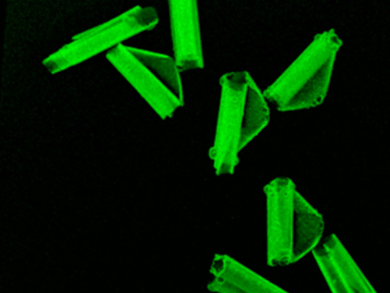Plants such as the venus flytrap that change shape upon stimulus are common in nature. However, it is a challenge in the synthetic world to design materials that form three dimensional shapes from two-dimensional planar films.
Vladimir Tsukruk and a team at the Georgia Institute of Technology, Atlanta, GA, USA, and Tufts University, Medford, MA, USA, have come up with 2D sheets based on silk-on-silk materials that can self-roll into different shapes. They coated a silicon wafer with a polystyrene supporting layer, and used layer-by-layer assembly to put two silk layers, one active and one passive, on top. Photolithographic patterning and etching were used to form “cuts” with defined dimensions and shapes, and treatment with sodium hydroxide resulted in release of the sheets from the substrate, and subsequent self rolling.
The researchers found that the shapes of the resulting 3D structures were dependent on the dimensions of the cut 2D shapes. For example, parallelograms with angles of 15°, 30°, and 90° formed rings, helical tubules, and conventional tubules, respectively. This behavior was shown to arise from the control of biaxial stress within the sheets. The self-rolling/unrolling was shown to be reversible, and is driven by swelling/deswelling of the active silk layer. These biocompatible and stable structures have potential applications in many areas, such as bioscaffolds and drug delivery.
- Self-(Un)rolling Biopolymer Microstructures: Rings, Tubules, and Helical Tubules from the Same Material,
Chunhong Ye, Svetoslav V. Nikolov, Rossella Calabrese, Amir Dindar, Alexander Alexeev, Bernard Kippelen, David L. Kaplan, Vladimir V. Tsukruk,
Angew. Chem. Int. Ed. 2015.
DOI: 10.1002/anie.201502485




